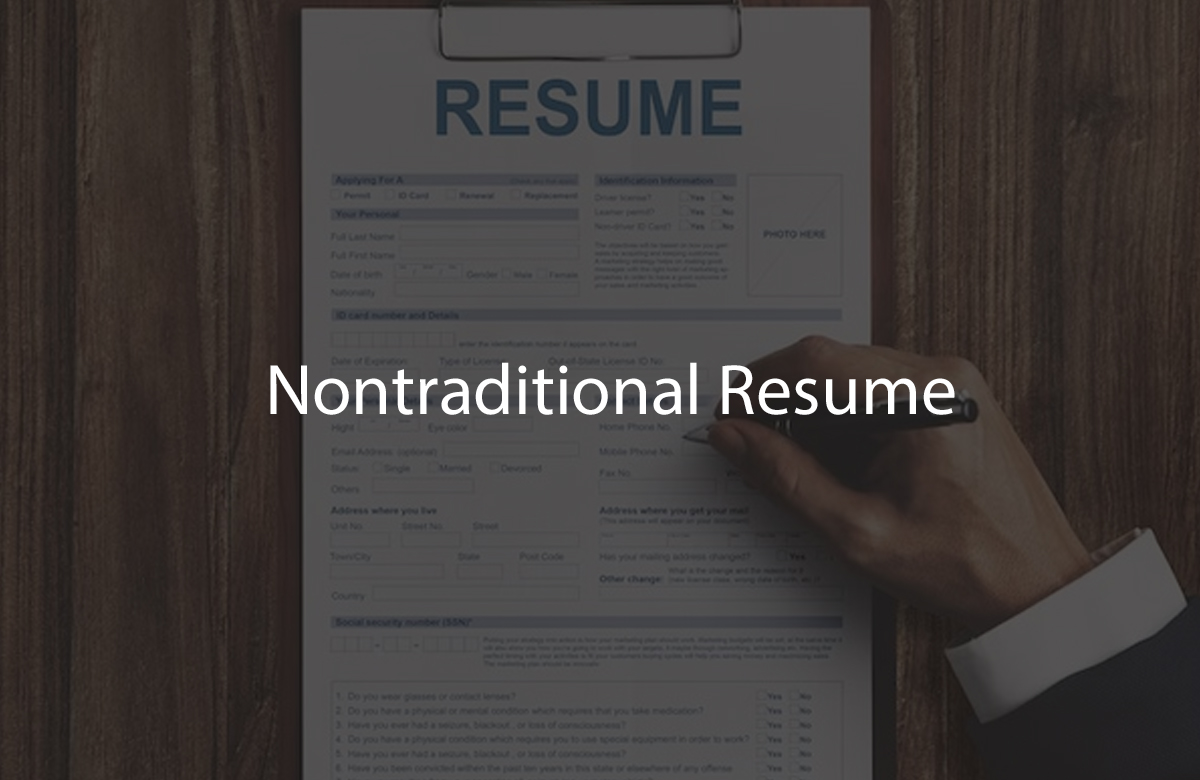
Nontraditional Resume
A nontraditional resume, also known as a creative or unconventional resume, breaks away from the standard format of a traditional chronological or functional resume. It allows you to showcase your skills, experiences, and personality in a unique way, making you stand out from other job applicants. Here are some examples and ideas for creating a nontraditional resume:
- Infographic Resume:
- Present your qualifications and experiences using visually appealing graphics and icons. Use charts and graphs to showcase your achievements.
- Video Resume:
- Create a short video (1-2 minutes) introducing yourself and highlighting your skills, experiences, and enthusiasm for the job. Dress professionally and speak confidently.
- Portfolio or Website:
- Build a personal website or online portfolio where you can showcase your work, projects, and accomplishments. Include a link to this website on your traditional resume.
- Social Media Resume:
- Use platforms like Instagram, Pinterest, or LinkedIn to create a visual resume. You can post images and captions highlighting key achievements and skills.
- Timeline Resume:
- Present your career journey as a visual timeline, emphasizing key milestones and achievements. This can be done using design software or even by hand.
- Skills-Based Resume:
- Instead of listing jobs and experiences, create a resume organized around your key skills and competencies. Explain how these skills are relevant to the job you’re seeking.
- Interactive PDF Resume:
- Create a PDF document with interactive elements like clickable links, buttons, and tabs to navigate through different sections of your resume.
- Online Video Portfolio:
- Create a YouTube channel or Vimeo portfolio where you upload videos showcasing your work, presentations, or creative projects.
- Creative Visuals:
- Incorporate eye-catching visuals, such as illustrations, photographs, or drawings, that reflect your personality and skills.
- Word Cloud Resume:
- Use a word cloud generator to create an image where the most important skills or keywords related to your career are displayed prominently.
- Personal Branding Resume:
- Focus on building a strong personal brand throughout your resume, using consistent colors, fonts, and design elements that reflect your identity.
- Storytelling Resume:
- Write your resume as a narrative, telling a compelling story about your career journey, highlighting challenges you’ve overcome and successes you’ve achieved.
- Collage Resume:
- Create a visual collage using images, text, and graphics that represent your skills, experiences, and interests.
- Interactive Website Resume:
- Build a one-page, interactive website where visitors can click on different sections to learn more about you, your skills, and your achievements.
- Audio Resume:
- Record a short audio clip where you introduce yourself and discuss your qualifications and experiences. Share this along with your traditional resume.
Remember that while nontraditional resumes can help you stand out, it’s essential to consider the industry and company culture when deciding which format to use. Some employers may appreciate creative resumes, while others may prefer more traditional ones. Always ensure that your nontraditional resume is professional, well-organized, and easy to navigate.
